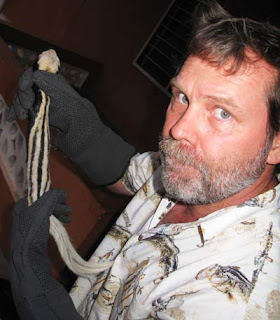Today a few villagers came to the gate with a Nile monitor lizard that had been caught in their hooks down at the lagoon. Instead of releasing it back in the water, they tied a small rope to its leg and beat it to keep it from fighting. By the time they gave it to me, the lizard was almost dead. I gave another lecture to the villagers that if it happens again, to just let it go and not try to sell it in the markets. Sadly, he passed away after a few hours.
This is a great picture of his claw hand with a powerful gripping claw. When eating, he uses his claws to rip open his prey.
Another picture of his front claws, reminds me of the dinosaurs in Jurassic Park!
Nile Monitors can grow to about 9 ft (2.7 m) in length. They have muscular bodies, strong legs and powerful jaws. The teeth are sharp and pointed in juvenile animals and become blunt and peg-like in adults. They also possess sharp claws used for climbing, digging, defense, or tearing at their prey. Like all monitors they have a forked tongue, with highly developed olfactory properties.
Their nostrils are placed high on the snout, indicating that these animals are highly aquatic, but are also excellent climbers and quick runners on land. Nile Monitors feed on fish, snails, frogs, crocodile eggs and young, snakes, birds, small mammals, large insects, and carrion.(Wikipedia)





















































